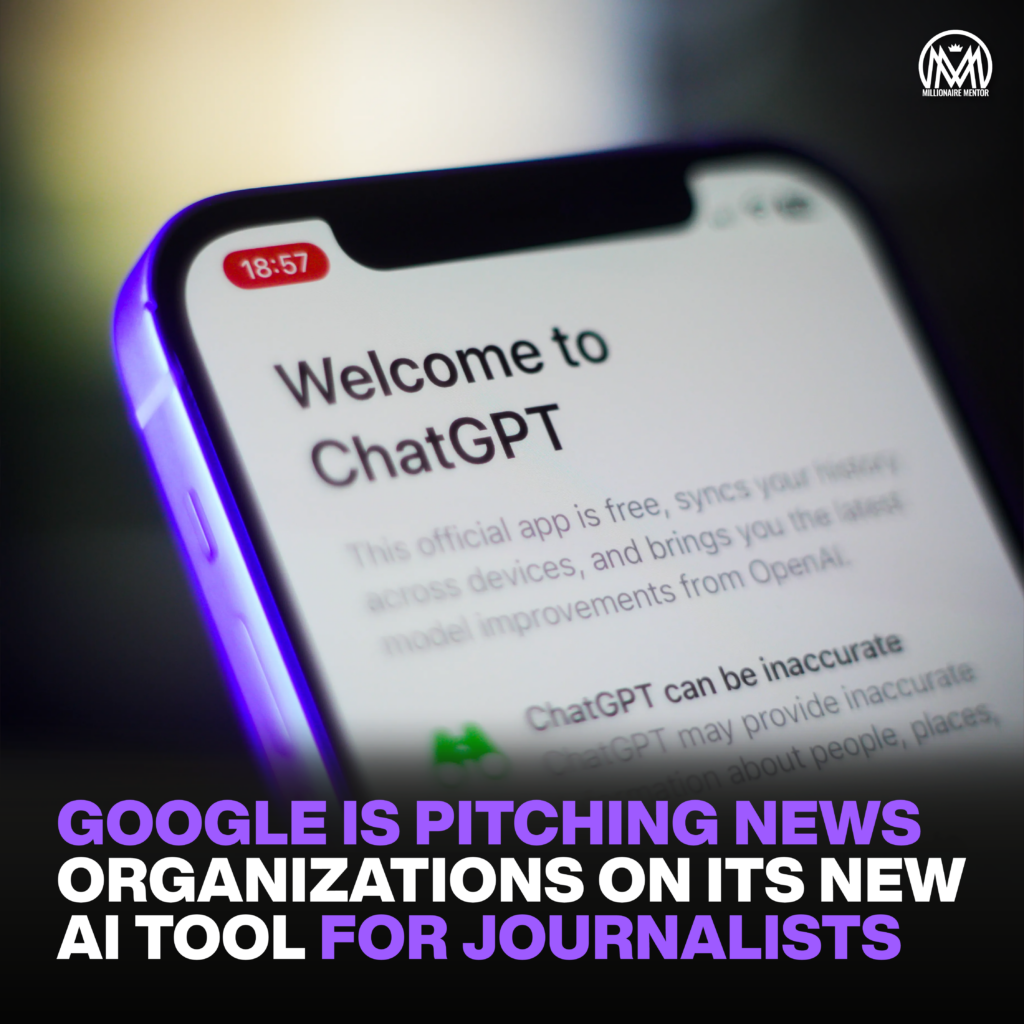In a groundbreaking development at the intersection of artificial intelligence (AI) and journalism, Google is testing an AI tool capable of writing news articles. This revolutionary technology, fueled by advanced natural language processing and machine learning algorithms, holds the potential to reshape the future of media and news reporting. By automating the generation of news content, Google aims to streamline the information dissemination process while raising intriguing questions about the implications of AI-driven journalism.
Google is testing AI for news article writing.
AI has already found its way into various industries, transforming processes and enhancing efficiency. In the field of journalism, AI-powered tools have been utilized for tasks such as fact-checking, content recommendation, and sentiment analysis. However, Google’s latest endeavor represents a leap forward, as it endeavors to create an AI system capable of autonomously composing news articles.
How Does the AI Tool Work?
The AI tool, developed by Google’s research and engineering teams, leverages the power of large language models and neural networks. Initially, the system is trained on a vast corpus of text data, including news articles from reputable sources, historical news reports, and relevant content. This extensive training process enables the AI tool to understand the nuances of language, grammar, context, and the intricacies of different news domains.
Using a technique known as “unsupervised learning,” the AI model doesn’t require labeled data, meaning it can autonomously learn patterns and structures in the data without human intervention. As a result, the tool becomes adept at generating coherent and relevant news articles without any direct human input.
Key Advantages of AI-Generated News.
Speed and Efficiency: AI-powered news writing could significantly expedite the news reporting process. Instead of waiting for journalists to write and verify articles manually, the AI tool could instantly generate comprehensive news pieces based on available data.
Consistency: With an AI tool, there’s potential for uniformity in writing style, tone, and structure across news articles, reducing inconsistencies that may arise with multiple human writers.
Scalability: As the volume of news increases, AI can handle the surge in demand for news articles, ensuring readers receive real-time information without any delays.
Multilingual Capabilities: AI language models can be trained in multiple languages, enabling the tool to cater to a global audience by producing news articles in various languages.
Ethical Considerations and Challenges.
Despite the potential advantages, AI-generated news also raises ethical concerns and challenges. One significant issue revolves around bias. If the AI model is trained on biased data, it might perpetuate and amplify existing biases present in the news. Ensuring a fair and unbiased representation of events requires diligent monitoring and oversight.
Another concern is the impact on journalists and journalism jobs. As AI tools advance, there is a possibility that certain roles within the industry might become automated, leading to job displacement. Striking a balance between AI integration and preserving human journalism expertise is crucial.
Google’s venture into developing an AI tool capable of writing news articles marks a significant step forward in the realm of journalism. While the potential benefits in terms of speed, scalability, and consistency are promising, ethical considerations and challenges must be addressed diligently. The future of AI-driven news writing will depend on striking the right balance between AI automation and preserving the core principles of responsible, unbiased journalism. As the technology evolves, it will be fascinating to observe its impact on the media landscape and the way we consume news in the digital age.


Trending News Articles
 Elon Musk talks Tesla,Twitter and why he tweets freely.by Jason Stone●May 17, 2023
Elon Musk talks Tesla,Twitter and why he tweets freely.by Jason Stone●May 17, 2023 The true definition oh a real man! Would …by Jason Stone●March 11, 2023
The true definition oh a real man! Would …by Jason Stone●March 11, 2023 The Blockchain Revolution: Cryptocurrency Investment, Bitcoin and Youby Jason Stone●December 23, 2017
The Blockchain Revolution: Cryptocurrency Investment, Bitcoin and Youby Jason Stone●December 23, 2017 Neuralink will test its chip in in human trials this year says Elon Muskby Jason Stone●June 21, 2023
Neuralink will test its chip in in human trials this year says Elon Muskby Jason Stone●June 21, 2023





